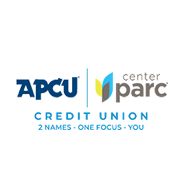The reasons to complete a higher education are many. Earning a degree opens more doors of opportunity, helping people pursue more advanced careers and even earn more money over the course of their lifetimes. In fact, those who earn a bachelor’s degree earn an average of almost $40,000 more each year than those who earned only a high school diploma – a difference of 55%.
Still, the price tag of higher education is significant, exceeding $100,000 over the course of four years. For this reason, many students are saddled with significant student loan debt by the time they earn their degrees — and most students don’t earn enough in those early years after college to pay that debt down right away. Even so, paying off student loans is possible with the right strategies.
Repayment options are determined by several factors, including the type of loan and repayment terms and plans.
Types of Student Loans
Some student loans are considered “private,” which are loans issued by banks and credit unions. “Public” loans are those in which the federal government is either the lender or guarantor of the loans. Public loans fall into three main federal student loan programs: the Direct Loan Program, the Federal Family Education Loan (FFEL) Program, and the Perkins Loan Program, which is no longer offering new loans. Within the Direct Loan Program and the FFEL Program, students may obtain Stafford loans and PLUS loans.
Stafford loans are the most common student loan, available as either subsidized or unsubsidized. Subsidized means the government pays the interest while the student is still in school or while loans are in deferral to be paid at a later time. For unsubsidized loans, interest begins accruing at the time of disbursement. However, the borrower can opt to begin making interest-only payments during this time.
PLUS loans are those that are made available to both parents of undergraduate students or directly to graduate students. They are always unsubsidized.
Private loans made by credit unions are usually unsubsidized. The repayment terms of these loans can vary by financial institution.
Repayment Terms
Borrowers typically do not have to make payments as long as they are enrolled as at least a half-time student. The period of payment deferment varies by loan type. For example, Stafford loans defer payments for six months following graduation. Perkins loans defer payments for nine months after graduation. PLUS loans offer undergrads the option to start making payments within 60 days of disbursement or waiting until six months following graduation as long as the student remains enrolled at least as a half-time student. Graduate students must begin repayment of PLUS loans 45 days after graduation. Private loan repayment options vary by lender.
Making repayment even more complicated, many times student loans are often sold, meaning payments may be owed to a completely different lender than the one who originated the loan. Lenders can also use third parties to service loans and collect payments adding to the complexity of repayment. Delinquency further complicates things as a collection agency, a state guarantee agency or the Department of Education may collect payments. Those with public student loans can find help on the National Student Loan Data System at nsldsfap.ed.gov.
Direct and FFEL loans offer several types of repayment options:
- Standard repayment is a default plan allowing a fixed monthly payment for up to 10 years. This type of repayment plan comes with the highest monthly payments.
- Graduated repayment plans offer initially smaller payments that increase over time, and funds must be repaid in 10 years. This option works well for grads who anticipate significant increases in earnings over time.
- Extended repayment plans allow repayment of a minimum of $30,000 over 25 years for lower payments.
- Direct-to-student loans offer income-contingent repayment plans that account for income and family size when determining your monthly payment. This option works well for those with limited income and can offer extended repayment terms.
- Similarly, FFEL income-sensitive repayment plans offer monthly payments determined by your income, but the payment must cover at least the interest owed each month. Payment amounts increase over time and the repayment period is limited to 10 years.
- Student borrowers can qualify for income-based repayment plans based on how much debt they have relative to their income and family size. Monthly payments may not need to cover all interest, and loan balances are canceled after 10 to 25 years, depending on qualifications.
Paying Down Debt
It is extremely important to make student loan payments on time to avoid going into collections, which can negatively impact the borrower's credit score and history. When possible, borrowers should devote extra cash to paying down student loan debts as principal-only payments can drastically reduce the overall repayment amount.
Borrowers with exceptionally high interest rates may benefit from refinancing but they should consider any potential ramifications if doing such. Consolidating multiple student loans into one payment can yield a lower interest rate or even help those who have fallen behind, but it may result in the borrow being unable to defer payments or select any alternative payment options in the future.
As always, APCU/Center Parc's friendly lenders are here to help with student loan guidance. They can answer questions and help borrowers explore payment options. Stop by a branch or call 800.849.8431 to learn more.


